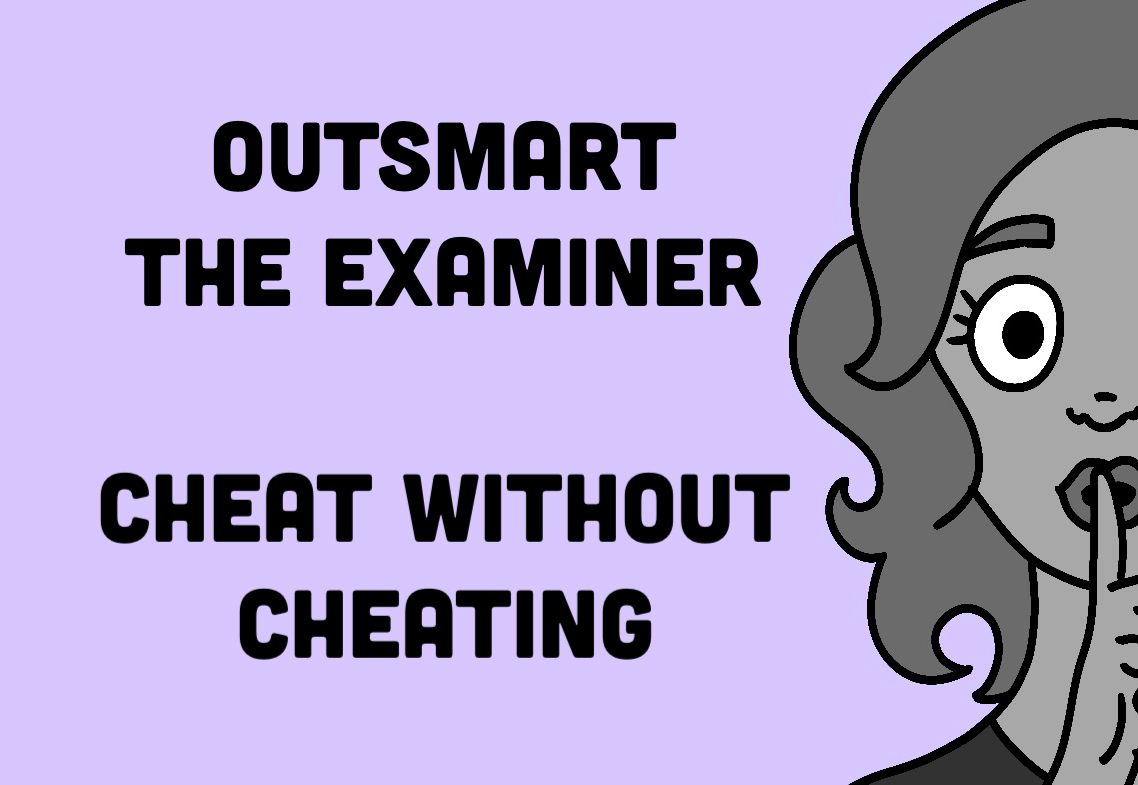WhatsApp:
+353 87 202 0389

We all wish we could just do away with exams altogether, or at the very least, outsmart the examiner and achieve maximum results with minimal work.
Have you ever seen the movie How to Cheat in the Leaving Certificate?
It follows a group of sixth years and the lengths they go to to try to steal the exam papers before June so that they ace the exams. Gas stuff altogether.
Luckily, you don’t need to do anything as elaborate as this to know what’s going to come up this year and outsmart the examiner. It’s actually a lot simpler than you think!
The Leaving Cert is developed by humans, often teachers who are experts in their subject, but they’re not always experts when it comes to tricking students! Every year, there are hundreds of kids who achieve top points, and not all of them are natural-born Einsteins.
Most of these high-achieving kids are clever before they are smart. And that’s an important difference to be aware of – because anyone can be clever enough to outsmart the examiner!
This blog is partially inspired by Adam Robinson’s acclaimed guide, What Smart Students Know, but we’re going to save you precious time by condensing it down into a few simple tips:
Know Where To Start Studying
Believe it or not, the first place to start studying is not Chapter 1 of a textbook. In fact, before you even think about textbooks, notes, exam papers, or anything like that, you need to know what you are supposed to have covered.
And there’s a very easy way to find out. It’s known as the syllabus.
(Anyone know the plural for syllabus? Syllabuses? Syllabux? Syllabi…? Let us know!)
The syllabus is a PDF document that can be easily retrieved from the SEC Website, and it breaks down everything you need to know for that particular subject.
Our advice? Print this out, go through it with a fine tooth comb, and by the end, you’ll have a better idea of what you need to have covered before June.
You can even start to tick topics or learning concepts off as you cover them in school or in study. It will serve as a pre-made checklist, and we all know there’s nothing more satisfying than checking something off a list!
Analyse Trends (But Don’t Rely On Them)
We’ve all heard that eejit in the locker area harping on about how they ‘know’ what will come up in this year’s Home Ec paper, right?
Well, that eejit might just be onto something…
We’re not saying there’s any way to fully predict what will be asked on the exams (unless you are actually a clairvoyant), but there are certainly ways to hazard an educated guess.
Exam trends are among the best ways to outsmart the examiner. Exam trends are usually presented in table format, with 2 axes, one with the examinable topics and the other with the years (starting at the most recent), and every year that particular topic came up, the relevant box on the chart was ticked or filled in.
What’s the value to making or sourcing an exam trends chart? It’ll give you an idea about what might not be high priority in terms of study (i.e. if it came up last year).
So if you see that a certain construction came up last year in Maths Paper 2…you might just be able to get away without studying it this year!
But be warned: the cleverest students never completely rely on trends, because examiners have caught onto the fact that we notice them. Always cover yourself as best you can, and know what risks are worth taking! You can only outsmart the examiner if you’re clever enough yourself!
Marking Schemes Aren’t Just For Examiners…
Sure ye’ve all seen the teacher pull up the SEC website and go into the Exam Material archive to show ye a past paper, but have any of your teachers shown you the Marking Schemes?
Perhaps not, because typically, they’re used by people correcting the papers rather than sitting them. But they are public domain, and they are worth looking at if you want to succeed.
The best way to outsmart the examiner is to become them, and the Marking Schemes is a rare insight into how your exam will be graded. Their purpose is to standardize marking, so that examiners know which students to give 5 marks and which to give 15.
It lines out exactly what students need to do – again, in a checklist format – in order to hit top marks. It not only provides us with these hints, but also examples of answers top students submitted that year, sometimes even sample answers.
These sample answers are quite literally examples of students giving the examiner exactly what they were looking for – TAKE NOTES!
For Maths in particular, we find marking schemes really valuable. They always give you solutions, which can be handy to go over if you’re finding questions tricky, and again, to understand what could earn you marks, which brings us to our next point…
Examiners Loves A Trier (And Sometimes, A Chancer!)
If you’ve had a look at those marking schemes, you’ll see that, in maths, there’s often a tiered structure to grading:
Low partial credit, mid partial credit, high partial credit, and full credit.
Basically, this is how examiners decide how many marks to give you for giving the question a go, even if you got it wrong.
That’s right – you can get almost every question ‘wrong’ in the Leaving Cert Higher Level Mathematics Paper, and still get a H2, if you just give every question a bash.
Let us explain:
If you see a Calculus question, and you think you can’t possibly answer it, GIVE IT A BASH!
What is the worst that could happen? You can’t lose marks in exams because you start from zero, so attempting it only increases the odds that you’ll pick up a few jammy points for having the salt to put something down.
Sure we all had that friend in school who used to write down the quadratic formula when they didn’t know what to do…and sometimes it works! God loves a trier and hates a chancer, but examiners will award both!
If you can’t outsmart the examiner with knowledge and tact, at least show them that you’re somewhat clued in.
A Bit Of Cop On Goes A Long Way…
The biggest complaint we hear from parents here at Breakthrough Maths, and the reason why so many students need our maths grinds, is that all of the knowledge seems to fly out of their head the second a paper is put down in front of them.
If that sounds like you, you’re not the only one, and we know how to help you!
Pretty much everyone would be doing well in their exams if the questions weren’t word problems, and that’s exactly why word problems exist – to separate the H1s and H2s from H6S and H7s.
Anyone can plug some numbers into a formula, but it takes something called critical thinking (or cop on) to really succeed.
In our maths grinds, we talk students through how they should tackle questions in depth, so if this is something you really struggle with, you should book in for a free trial to tackle this problem head on.
But for now, let us just briefly summarise:
When you see a really wordy maths question, don’t freak out. Remember, they’re not about to ask you anything that isn’t on the syllabus.
You have the information in your head, you just have to pick out what you need to answer the question.
So, start by looking for hints. If you see ‘find the relationship between x and y’, the chances are they’re asking you to draw a graph, because a graph is essentially that!
If you can’t see hints straight away, don’t panic! Read the question again, and ask yourself how you would paraphrase it.
Guarantee you, that will take you one step closer to understanding what they’re asking, and from there, you are golden.
Even if you know you don’t have the skills to finish the question, follow our advice from before and write something relevant down – it won’t go astray.
The bottom line here is that examiners will give you some marks for having knowledge, more for having skill, but all of them for being able to use your brain as best you can, even if that means you just write down a formula – because at least you were able to recognise that it was required!
Sometimes, to outsmart the examiner, you just have to keep them sweet!
TJ— CEO of Breakthrough Maths.
Need help in Maths? Contact the Breakthrough Maths team here.





